The Montana Skatepark Association started as the Missoula Skatepark Association in 2000. It was a simple, loosely organized group of skateboarders in their mid-twenties who were frustrated by the absence of any free, legal place to skate. That year, childhood friends and long-time Missoulians, Chris Bacon, Andy Kemmis and Ross Peterson met with the Missoula Parks and Recreation Department Director, Donna Gaukler to discuss what options were available. Over the next couple of years these “skatepark meetings” became more frequent, the MSA was formed and became a legitimate 501(c)3 non-profit organization and a plan for building a skatepark was developed.
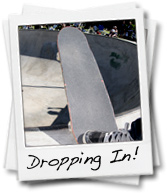
By 2003, the MSA had matured, was more organized and gaining momentum. The project received its first big donation and a much needed boost when local Missoulian, skater and friend Jeff Ament (of Pearl Jam fame), pledged a $50,000 matching cash donation. Prior to this financial milestone the MSA had been raising money through aluminum can donations at various middle schools and from funds received at a pay-to-skate wood ramp located in the back of the Edge of the World, the local skateboard/snowboard shop. Soon, word of the project began to spread. A fall video premier party raised over $1000, the Missoula City Council unanimously approved the idea of the Missoula Skatepark project and a location in McCormick Park was selected in Downtown Missoula near the Clark Fork River. The Missoula Redevelopment Association (MRA – who would later become one of the primary funding sources for the project) awarded the MSA a $100,000 matching grant and by the end of the year, the project officially “had legs.”
In early 2004 Big Sky Brewing selected the MSA as one of only two local non-profit organizations to benefit from their fledgling summer concert series. The brewery offered all profits from beverage and parking sales to be split between the two non-profit organizations. In return, the organizations needed to provide volunteers, a license to sell alcohol, liability insurance and other miscellaneous expenses related to hosting an outdoor concert series of 2000-5000 attendees. For the MSA, this was possible due to the strong number of supporters who were willing to lend a hand.
Due to the nature of the Missoula Skatepark project and the use of public funds pledged from the MRA, a very detailed procedure needed to be created and followed to ensure that the right company be chosen for the design and construction of the skatepark. A pre-qualification package was developed and made available for skatepark construction companies to fill out and submit back to the MSA. By requiring bidders to adhere to this pre-qualification package the MSA was able to control the quality of the potential design and monitor construction bids. Many cities have run into problems when contractors without skatepark-specific construction experience provide the winning bid. 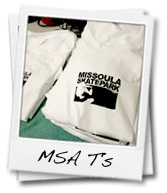 For the Missoula Skatepark to be a success it was crucial to hire experienced professionals for both the design and construction phases of the project.
For the Missoula Skatepark to be a success it was crucial to hire experienced professionals for both the design and construction phases of the project.
During the slower months of planning (winter 2004) the MSA developed and printed a simple t-shirt design to be sold at various events. These hand-screened shirts were created for less than $2/shirt with volunteer labor and retailed for $10. Along with the shirts, MSA sticker packs and custom MSA skate decks were sold online at the MSA’s website. Soon, merchandise sales were increasing and cash donations were coming in from supporters from around the country.
In the late spring of 2004 another standing-room-only skate video fundraiser raised over $1000 and the pre-qualification packets of potential skatepark designers were returned. The skatepark design committee (composed of city officials, MSA board members and donors) looked over the submissions and selected Grindline Skateparks from Seattle, WA as the Missoula Skatepark designer. Grindline was hired to assist the MSA in the design process (including two public meetings with interested members of the Missoula Community) as well as provide final construction documents to be used by the yet-to-be-determined skatepark construction firm. Although detailed in completely separate contracts, the “design” and “construction” aspects of the Missoula Skatepark project were both governed by the initial pre-qualification criteria. Any potential construction bidder also had to meet the MSA’s criteria in order to be considered for the project.
Fundraising really took off for the project during the summer of 2004 and the MSA realized that it was necessary to invest in becoming a fully tax exempt non-profit organization. This classification was obtained after hiring an attorney, an accountant and filling out a mound of paperwork. 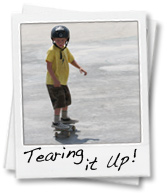 Once granted, this status offered potential donors a full tax exemption for every dollar that was given to the MSA as well as the ability to apply for temporary state liquor licenses (in Montana). These licenses were used for beer sales at the summer concert series held at Big Sky Brewery. Over a hundred volunteers were organized over the summer and helped with parking and beer sales at these two events (Big Head Todd/John Fogerty and BB King). When everything was tallied in the fall, the concerts, a $5000 grant from the Appleseed Foundation and another video premier party all raised over $20,000.
Once granted, this status offered potential donors a full tax exemption for every dollar that was given to the MSA as well as the ability to apply for temporary state liquor licenses (in Montana). These licenses were used for beer sales at the summer concert series held at Big Sky Brewery. Over a hundred volunteers were organized over the summer and helped with parking and beer sales at these two events (Big Head Todd/John Fogerty and BB King). When everything was tallied in the fall, the concerts, a $5000 grant from the Appleseed Foundation and another video premier party all raised over $20,000.
Grindline’s first public design meeting was held in January of 2005 and was well attended by skaters, parents, city officials and other interested parties. Everyone contributed their ideas, thoughts and drawings to be used in the development of the plan for Missoula’s Skatepark. In addition, measurements and photos of various Missoula “skate spots” were given to Grindline for incorporation into the design. Everyone involved felt that recreating spots from the Missoula “skate landscape” would make the skatepark extremely unique and attract skaters to the skatepark instead of the original and often controversial, public locations.
The MSA continued gaining momentum in 2005 with each passing month. Organizers were invited to participate in a weekly summer event on Thursday nights to promote the project with a traveling information booth and merchandise sales tent. The Missoula Redevelopment Agency awarded the project an additional $75,000 of public funding and the MSA was named the sole beneficiary of parking and beer sales at the 2005 Big Sky Brewing concert series. In addition, the MSA submitted the Tony Hawk Foundation grant application, one that took over 3 months of work to complete and would lay the foundation for all future grant requests.
In April 2005 the final Missoula Skatepark design was unveiled at the second Public Design meeting. Grindline returned to Missoula to present their plans and were met with overwhelming support. The rest of the spring was spent in nearly constant planning meetings. 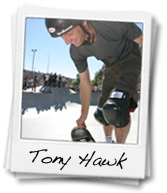 There was a summer concert series to plan, a new website to be designed and built, a fall art show/auction idea to develop and custom engraved bricks to sell.
There was a summer concert series to plan, a new website to be designed and built, a fall art show/auction idea to develop and custom engraved bricks to sell.
Summer 2005 was welcomed with a check for $15,000 from the Tony Hawk Foundation. At the time this was the largest sum ever donated to an organization in Montana. The months of June, July, August and September were packed with fundraising events every week in downtown Missoula as well as many weekends and evenings when concerts were held at Big Sky Brewing. Hundreds of volunteers helped the MSA raise over $30,000 at the four concerts by artists that ranged from Widespread Panic and 50 Cent & G-Unit to Crosby, Stills & Nash and Willie Nelson.
During 2005, the MSA also met with an attorney to figure out how to auction off a vehicle using our website as the ticket office. This one-of-a-kind custom Jeep was made available by American Expedition Vehicles (a Missoula-based Jeep conversion company). The MSA decided to sell a maximum of 2000 tickets for $100 apiece. After paying for the Jeep everyone hoped that this fundraiser alone would account for well over $100,000.  The first ticket sold in early 2005 after a long list of legal details had been worked out.
The first ticket sold in early 2005 after a long list of legal details had been worked out.
The Missoula Skatepark organizers pressed on through the fall, with the help of several Missoula art community members and developed “ON DECK,” an art show/auction that has become an annual event. Blank skateboard decks were sent to artists around the country who were interested in creating a custom art piece for the MSA to auction off. Once returned, the pieces were displayed on the MSA website where bids were placed until the day of the auction. The high bids were then transferred to a live auction during Missoula’s monthly art walk, known as “First Friday.” The inaugural ON DECK raised over $7000 and has since been described as “Missoula’s most innovative and fun art show.” Throughout the fall months, the Missoula Skatepark also saw the first bit of earth move at the actual location. Organizers were able to strike a deal with the University of Montana and a local construction company for some much-needed fill dirt. The fill was trucked in and compacted prior to the winter season allowing the pile plenty of time to settle before spring construction.
Fundraising continued to be the primary focus during the winter of 2005/2006 along with the process of selecting the pre-qualified skatepark company who would actually build the Missoula Skatepark. The final bid package was sent out to the companies that met our criteria and when the bids came back it was Grindline who, once again, won our vote. The phone call was made, check sent and the Missoula Skatepark was finally on the books to be built, although only in part. 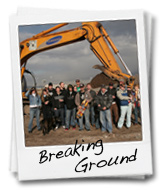 Unless we were able to raise another $100,000 in 3 months, we could only afford to build a portion of the entire design and would be forced to complete the project in 2 phases. Fingers were crossed and spirits lifted by some national magazine exposure on our Jeep raffle. Ticket sales soared and in January 2006 the1000th ticket was purchased. With the cost of the vehicle covered every ticket sold was another $100 in the bank for the MSA.
Unless we were able to raise another $100,000 in 3 months, we could only afford to build a portion of the entire design and would be forced to complete the project in 2 phases. Fingers were crossed and spirits lifted by some national magazine exposure on our Jeep raffle. Ticket sales soared and in January 2006 the1000th ticket was purchased. With the cost of the vehicle covered every ticket sold was another $100 in the bank for the MSA.
As soon as the ground softened in the spring of 2006, Grindline arrived for what would end up being a 6-month construction schedule. It was during this time that the MSA received a call from a local Missoula family who was interested in donating to the project. After a lunch meeting, they presented the organization with the remaining $100,000 and purchased naming rights to the park. The “Missoula Skatepark” was formally renamed “MOBASH” as an acronym using letters from the family’s names. The park construction could happen all at once and everyone involved was overcome with the outpouring of support for the project in recent months.
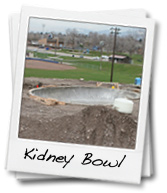
By early April 2006 the ‘kidney bowl’ was in place and work began on the ‘big bowl’. Summer construction progressed and crews worked through the scorching heat. A sprint to the finish was required when the MSA received a surprise phone call that would forever put MOBASH on the map. Skateboarding legend Tony Hawk’s production company called to ask if the MSA and Missoula City officials would be interested in a free event to be held at MOBASH in late September. With the full attention of everyone involved, measures were taken to prepare for what would certainly be a large event. The skatepark was finished on the night of September 23rd for the event that would be held the next day. Over 10,000 people arrived that morning to help Tony and company inaugurate Missoula’s brand new skatepark. Baseball, soccer and other city-wide youth events were cancelled in order for kids to join in the festivities. This event has since been recorded as the largest grand opening of any facility in Missoula’s history.
Because time ran out in the fall of 2006, the brick banks (replicas of an old skate spot removed from the University of Montana in the 1980’s) were completed by Grindline at the south end of MOBASH in the spring of 2007. These banks were constructed from several hundred engraved bricks that had been sold throughout the course of fundraising for the project. With this done, the landscaping complete and a donor plaque ready for unveiling, the MSA held a re-grand opening event in July 2007 to thank everyone who played a role in the creation of MOBASH.
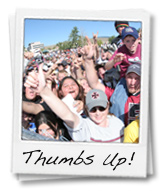
With a few months to digest all that had been accomplished in the past 7 years, the MSA founders and board of directors assembled to decide what would become of the organization. Everyone involved agreed that the talent, experience and passion shared by this group could be put to use by other Montana communities who need similar recreational opportunities created for their young people. By the winter of 2007/2008, the MSA formally changed its name to the Montana Skatepark Association, launched a new website and developed an grant based funding program that will allow other motivated municipalities in Montana to apply for funding for their own skatepark projects. In addition, communities with existing skateparks will be able to apply for funding to develop programming to help individuals get involved with skateboarding and provide them with access to skateboards and protective equipment.
The MSA lives on in its mission to provide new recreation opportunities for other Montana communities.
